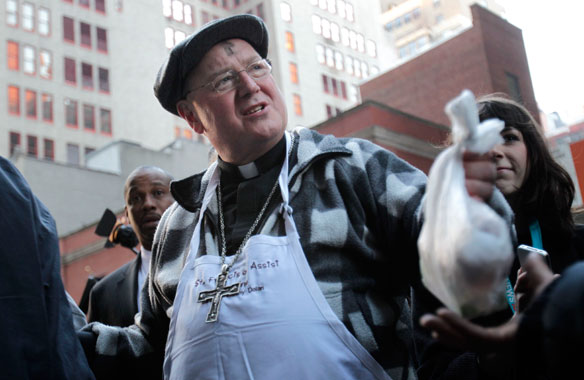
It is commonplace to complain about government mismanagement of welfare and social reform, and to speak wistfully of days when religious institutions did much better. Yet if we look back to the moment when the state began to take on some responsibility for those in need, what is most striking is the relief, and even enthusiasm, that many religious leaders expressed.
Nonetheless, last year on Easter, Billy Graham’s son Franklin, head of Samaritan’s Purse, had this to say to Christiane Amanpour on ABC’s This Week:
A hundred years ago, the safety net, the social safety net in the country was provided by the church.
If you didn’t have a job, you’d go to your local church and ask the pastor if he [knew] somebody that could hire him. If you were hungry, you went to the local church and told them, “I can’t feed my family.” And the church would help you. And that’s not being done.
But the government took that. And took it away from the church. And they had more money to give and more programs to give, and pretty soon, the churches just backed off.
Graham’s claim reflects a widespread understanding of the way the New Deal transformed the roles of church and state. And Graham is partially right. But he’s also partially wrong, and what he gets wrong is important.
Graham is right that churches stood prominently among the limited providers of support to those in need when the 1930s began. Indeed, Protestant leaders had spent the previous half-century trying to reform American society through social activism and charitable aid, ecumenical religious societies and denominations established orphanages, hospitals, schools, and settlement houses. Churches also provided informal support to local families that had fallen on hard times, as well as to particularly vulnerable populations of women and children. In the city, religious and civic aid organizations supplemented the work of municipal relief funds and state-based welfare programs. But in many rural areas, and in much of the South and West, churches were the primary source of help for suffering community members.
The Depression, however, did not spare the churches or their charitable efforts. W. J. McGlothlin, president of the Southern Baptist Convention, admitted in 1930, “We are putting off the Lord’s cause while we try to settle with our other creditors.” The following year, the Convention announced that denominational funding had dropped 25 percent since 1928, and they feared that the worst was yet to come. The Depression crippled churches’ finances, and the economic downturn forced them to slash services when people needed help most. Religious leaders and local church members alike recognized the crisis, and many demanded that the federal government intervene.
When Franklin Roosevelt announced his New Deal, religious leaders cheered. Indeed, many saw Roosevelt’s program as the realization of Christian ideals. As one Mississippi Methodist put it in 1933, “It is gratifying in the highest degree that our government is actually attempting to try out some of these things for which the Christian church has been contending for a quarter of a century.” What is striking about such fulsome praise is that it was widespread, and that clergy from a broad range of theological and political inclinations agreed that the New Deal was necessary—except the substantial number who instead protested that it did not go far enough. Certainly, dissenters spoke from the right as well, but their numbers were sparse in the early and mid-1930s.
Religious support for the New Deal boiled down to three key points. First, religious leaders recognized that the Great Depression had sapped their own ability to care for those in need. Second, many acknowledged that religious bodies had long struggled to provide adequate care even for the select few that they deemed both needy and deserving. Third, many saw the New Deal as the realization, rather than a refutation, of their Christian principles. They argued that only the state had the capacity to raise funds to support those in need. The government’s adoption of welfare and reform programs would allow churches to renew focus on their primary goal of evangelism, and the government’s emphasis on security for families and the elderly reflected the churches’ own priorities.
Franklin Graham correctly asserted that the government “had more money to give and more programs to give,” but the New Deal prioritized industry, farmers, and workers. Its programs thus rarely duplicated the churches’ efforts. The welfare programs initiated by Lyndon Johnson’s War on Poverty and Great Society came closer to work the churches had once done, but by then the churches had recovered from the Depression and elected to adopt a social role largely supplementary to that of the state.
In our nation’s history, and particularly over the last century, churches have repeatedly failed to provide adequate care for the underserved—and have just as often argued that such care is unnecessary or irresponsible. The state’s record on this count is imperfect as well. But the state stepped in to provide care only when the churches failed to do so, and often at the churches’ own bidding.
